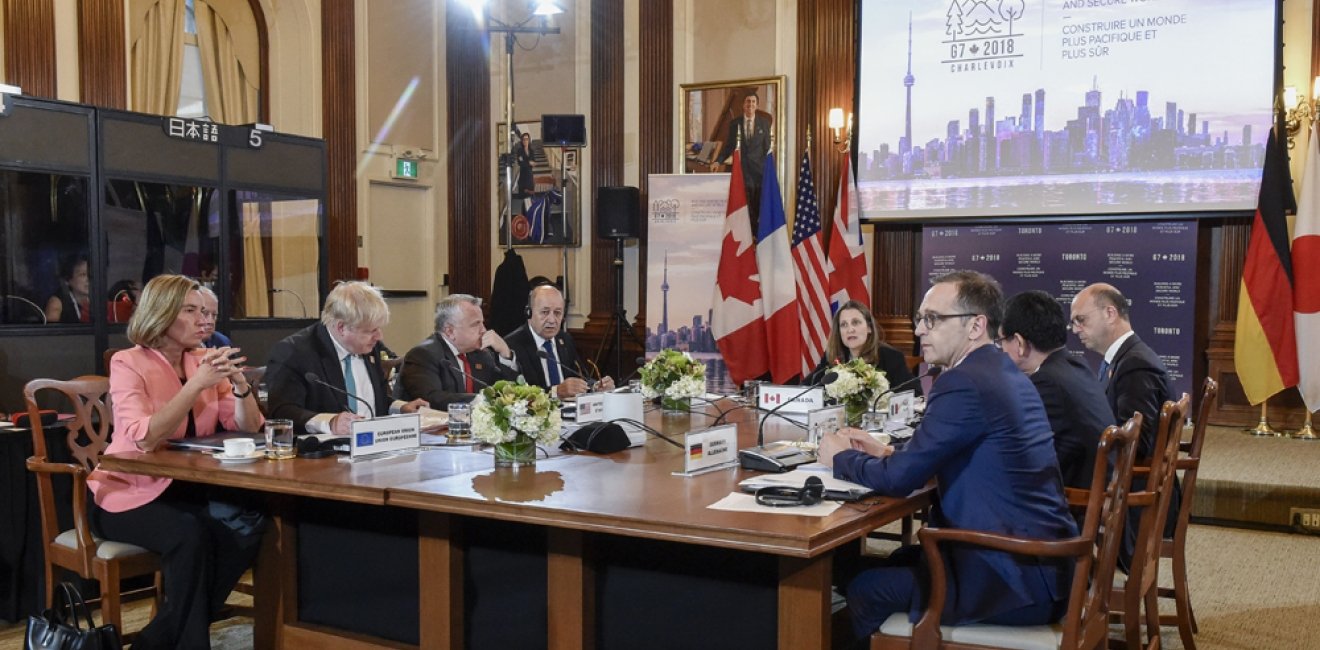
A blog of the Indo-Pacific Program
How China might retaliate against Washington’s threats to impose tariffs on a slew of Chinese goods in late May as part of a strategy to reduce the trade deficit has yet to play out. But some of the Trump administration’s fiercest critics have welcomed the White House’s move to impose a 25 percent tariff on $50 billion worth of Chinese goods on critical sectors, in addition to imposing investment restrictions. Certainly, the administration’s wariness of Chinese trade practices, especially concerning forced technology transfer and violation of intellectual property rights has garnered support even from some avid free trade supporters.
What has been far more unsettling, though, has been Washington’s shift in trade relations with some of its staunchest allies at a time when the United States needs global support to further its interests. Uncertainties about the end goal of U.S. tariffs in the name of national security have been particularly difficult for Japanese, Canadian, and European businesses to grapple with. Car manufacturers, for instance, face the prospect of being hit by a double whammy of higher steel and aluminum costs as a result of the Section 232 tariffs invoked in the name of protecting the United States against security threats, coupled with persistent worries about the future of NAFTA which is worth over $1.2 trillion to the auto industry.
At the latest G7 meeting in Toronto, leaders of the world’s wealthiest nations made clear that U.S. trade strategy is now threatening to destabilize global growth. France, Germany, Italy, Britain, Canada, and Japan showed a rare sign of public unity against the United States as the G7 stated that “tariffs imposed by the United States on its friends and allies, on the grounds of national security, undermine open trade and confidence in the global economy.”
Granted, Trump has actually been surprisingly consistent when it comes to his stance on trade compared to foreign policy, from when he was on the campaign trail as a presidential candidate. As a candidate, he made no bones about his concerns about the ballooning U.S. trade deficit with China as well as Japan, Germany, and other major countries, and he has not wavered from prioritizing bilateral deficit reduction as the single biggest goal for U.S. trade strategy. That position has remained unshaken despite criticism from most economists both within and outside of the United States.
At the latest G7 meeting in Toronto, leaders of the world’s wealthiest nations made clear that U.S. trade strategy is now threatening to destabilize global growth
Yet U.S. concerns about trading with China are actually shared by many of the allies it has now antagonized. While Trump has repeatedly called for a level playing field so that U.S. businesses could flourish, there is a broad consensus that China has been taking advantage of current trade rules and it was now time to insist upon reciprocal arrangements with China. For instance, taking action against Chinese telecom group ZTE for shipping U.S. goods and technology to Iran and North Korea, thereby compromising U.S. national security, had been broadly lauded overseas. Rather, it is backpedaling on taking speculation that a deal to reduce the U.S. trade deficit with China would overrule concerns about illicit technology transfers and compromises to national security.
It is such inconsistencies in trade policy as much as the strong-armed tactics of Washington threatening to impose punitive tariffs that is seen to threaten the business environment worldwide. A back-and-forth about whether the United States might consider rejoining the Trans-Pacific Partnership agreement pales in comparison, given that the TPP had not been in place to begin with. Actions that upend existing trade rules without offering alternative systems, on the other hand, only increase confusion and reluctance by businesses to make new investments. By imposing punitive tariffs and challenging the WTO as a forum for international trade dispute settlement, the White House should be prepared for the build-up of a coalition of its allies who remain committed to ensuring that trade rules remain not only fair, but also consistent and predictable. Just how broad that coalition can become to include or exclude China will depend on whether the United States moves forward with its strong-armed trade tactics.
The views expressed are the author's alone, and do not represent the views of the U.S. Government or the Wilson Center. Copyright 2018, Asia Program. All rights reserved.
Author


Indo-Pacific Program
The Indo-Pacific Program promotes policy debate and intellectual discussions on US interests in the Asia-Pacific as well as political, economic, security, and social issues relating to the world’s most populous and economically dynamic region. Read more





